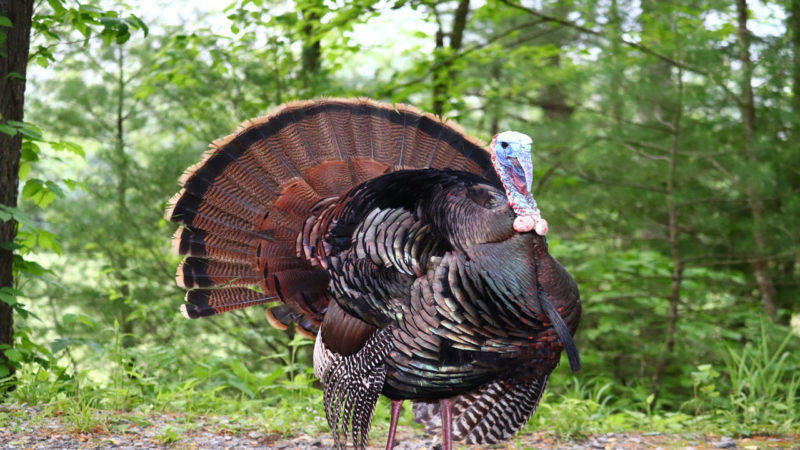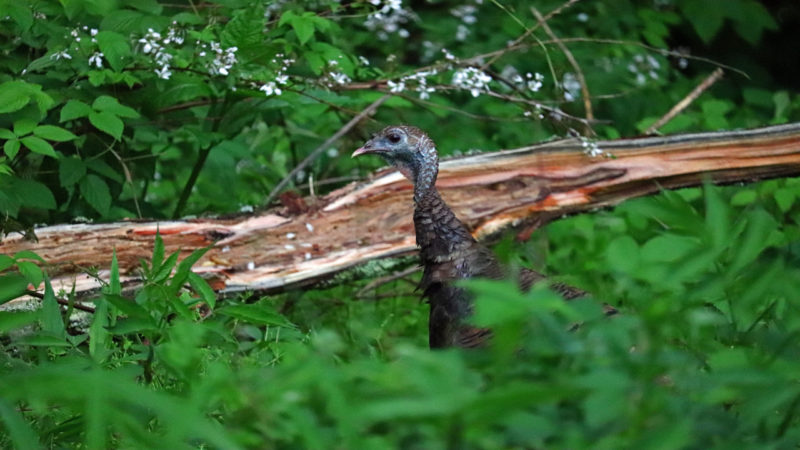Turkeys have an uncanny knack for humbling hunters, just when they feel as if they finally have nailed turkey hunting down to a science.
No two days in the turkey woods are the same, and every bird that we work is slightly different in its mannerisms, than the one that came before it.
To be consistent in our turkey hunting success, we must be versatile enough to adapt to a wide range of ever-changing conditions, and well versed enough to predict what a gobbler will do in any given situation.
Nothing builds this level of prowess any more efficiently than experience.

Few turkey hunters anywhere in the world today are as consistent and experienced as the Turkey Man himself, Eddie Salter. Salter has chased turkeys far and wide for nearly four decades, has won numerous State, Southeastern Open, and World Calling Championships, and genuinely lives for hunting the wild turkey at every turn.
During his lengthy career spent chasing gobblers wherever they can be found, Salter has developed many strategies for taking tough turkeys, despite often less than ideal circumstances.
The following are a few such turkey calling tactics that he says spell trouble for toms, even in highly pressured areas where other’s efforts fall short.
Run Multiple Calls In Tandem
Eddie Salter has found extensive success throughout the years using multiple calls in tandem with one another, to add significant depth to his calling repertoire.
This creates the illusion that more than just a single hen awaits a gobbler on the other end of the sweet melodies that he hears.

“One of the best things in the world to do is to learn to run multiple calls,” says Salter. This can be done with the use of both a mouth call and slate call, or alternatively, a mouth call and box call. “What has helped me a lot in the last few years is learning to run both calls at the same time, especially when I don’t have a buddy there,” Salter continued.
What does Salter attribute this method’s success to? “Hey, think about it. In a gobbler’s mind, two girls are better than one,” he said. Salter also says that using this tactic has helped bring several stubborn gobblers from a distance in the past few years, that he felt otherwise might not have been able to be lured into range.
Project Your Calling To Cover Greater Distances
Eddie Salter has also noted an increase in the effectiveness of his calling, when he has given special attention to the direction in which he projects his calling.
He feels that this offers the opportunity to reach out to gobblers at a distance, and to those that can not hear calling at typical volume due to high winds. This same principle applies as well to toms on the other side of topographical variances, such as hillsides.

“The conventional method of running a box call is to shoot the sound up in the air,” says Salter. “But if I think a turkey is over here, I’m going to turn this old long box that direction, because it’s shooting more volume down that way,” Salter continued when referring to pointing a box call in an angle that is consistent with that of a turkey’s location.
“I think it is like fishing. You might have been throwing your line out to a distance of twenty yards. But, if over the course of a day, you were to throw to a distance of thirty yards, you will be pulling 10 more yards of water every time. So I think you are probably going to catch more fish, and the same can be true for calling.”
Never Take Just One Type Of Call
Aside from the value of being able to run multiple calls at once, Salter also explained the virtues of carrying multiple types of calls on any given hunt.
“To go back to bass fishing, when you go to the lake, do you take one lure out there, or do you take the whole tackle box out there,” Salter asked.
“It’s the same way with turkey hunting,” Salter continued. “Don’t go to the woods with just one call. You might get a hold of an old gobbler that when you call him, he might not say a word. That’s why I always carry multiple calls,” Salter explained.
“When you find the right call, and he cuts you off with a gobble when you call, he’s telling you he’s very killable and wants to ride in your truck, and that is the name of the game,” said Salter.
Pull a Role Reversal
Salter also had advice about being opportunistic with your calling, and firing up a lovestruck gobbler by giving him what he wants to hear, at the time that he wants to hear it.
He says that doing so replicates a realistic scenario in which a tom is used to being part of, and can often be enough to bring him in on a string.

“When you first call to a turkey and he gobbles, it makes you feel really good as a hunter,” explains Salter. “But here is where I reverse that role.
I like to answer him. Let him gobble on his own, and when he gobbles, let him hear that call right back before he gets the last note out.
It makes you feel good. Why wouldn’t you think it makes him feel good? Salter says.
Add Excitement Into Your Calling
In some parting words of wisdom, Eddie Salter had one tip for calling turkeys that he feels is more important than almost any other piece of advice that one can follow.
He believes that by adding emotion to your calling, you stage a more realistic scene, and are better equipped to put gobblers in range with a higher degree of consistency.
“When you go to the turkey woods, you have to put a little bit of excitement into your calling,” says Salter.
He expressed the difference that varying the cadence and rhythm of your calling makes by demonstrating how standard, monotone calling sounds in comparison to excited yelps and cutting sounds.
“If you will learn to put a little bit of excitement into your calling, you will notice a world of difference in the reaction of most turkeys,” Salter concluded.
Turkey Calling Tactics - Conclusion
Learning to maximize your efficiency when calling, greatly increases the odds of filling your tags, and taking a gobbler home for your efforts.
By following Eddie Salter’s five tactics for calling in more turkeys this spring, you will be well on your way to experiencing a banner season in the spring turkey woods, and making memories of success that will last a lifetime.

 By
By 



